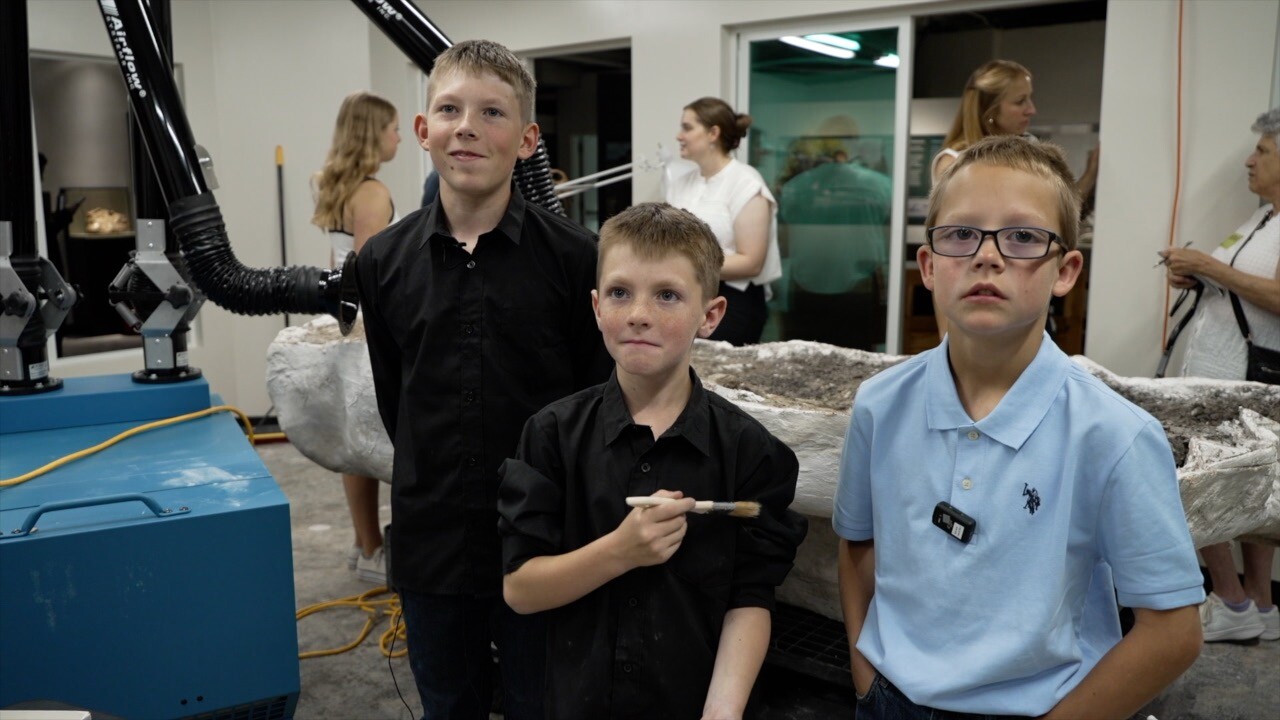DENVER — A new exhibit called Teen Rex opened Friday at the Denver Museum of Nature and Science, showcasing a juvenile T-rex found by three kids in the badlands of North Dakota.
Brothers Jessin and Liam Fisher and their cousin, Caiden Madsen, made the discovery about two years ago.

“When I got where the dinosaur was, immediately I knew it was a dinosaur,” said 12-year-old Jessin. “Hey, that's a dinosaur. It looks like a leg bone, but we found a dinosaur.”
Realizing that they had a real fossil, Jessin and Liam’s father, Sam, sent a photo to his friend, Dr. Tyler Lyson, curator of vertebrate paleontology at the Denver Museum of Nature and Science.
“I knew they wanted to find a dinosaur,” said Lyson. “So when he sent me a picture of his youngest boy, Liam, lying down next to the leg of what was undoubtedly a dinosaur, it was awesome. I was super excited for Sam, and I was really excited for his family.”

From the pictures, Lyson initially thought the family had found a fossil of a duckbill dinosaur — still exciting, but a fairly common fossil in that area of the country. It was only after the museum took over the excavation process that they uncovered its true nature.
“We’re digging and brushing, digging and brushing, and we brush away and we uncovered the lower jaw of a T-rex with several big teeth sticking out of it,” said Lyson. “It was just absolute, pure joy. It’s a moment I’ll never forget.”
“The feeling of discovery is unparalleled,” said Natalie Toth, chief fossil preparator at the museum, who took part in the excavation. “It's incomparable to anything else. And being able to share those moments with young people, like the young boys that found the fossil, seeing it all through their eyes is so exciting.”

The kids had something in common with the prehistoric predator. It was also a juvenile, which is an important scientific finding.
“We are really trying to get a better understanding of how dinosaurs grow and mature over their lifetime,” said Toth. “In order to do that, we need fossils of dinosaurs from every single step of that stage of growth."
They couldn’t dig up the entire skeleton in the open field. To keep the fossil safe, they had to move it to a controlled environment. So, they dug up the surrounding area, lifted it out with a helicopter and transported it to the museum.

The excavation continues now inside the new exhibit. Visitors can watch scientists dig up the fossil in real-time and also watch a film in the museum’s theater about the discovery of the ancient animal.
“The fact that we had a film crew out there that captured this is just incredible,” said Lyson. “I can't wait to watch the documentary, and I really can't wait to see the kids’ reaction when they see themselves on the big screen, reliving this moment of discovery.”





